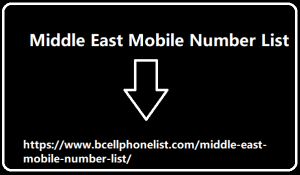|
|
This innovative strategy is not based on traditional marketing tactics, but rather on experimentation, creativity and data analysis to drive a company's growth. growth-hacking The term “Growth Hacking” was popularized by Sean Ellis in 2010, when he wrote a blog post looking for a professional to lead the growth of his startup. Ellis defined a Growth Hacker as someone focused exclusively on driving a company's growth, being a mix of technical skills, creativity and analytical thinking. However, the roots can be traced back even further, especially as the internet began to develop.
Brands like Hotmail, which gained popularity in the 90s, used growth hacking strategies such as including a “Get your free Hotmail account” link in every email message sent by users. This encouraged the platform's organic and viral growth . Growth Hacking has evolved rapidly as social media, data analysis, and automation tools have become more Middle East Mobile Number List accessible. Companies like Airbnb, Dropbox, and Uber gained notoriety for their innovative growth strategies, which included referral programs, social sharing, and constant experimentation. What is it and what is its objective Growth Hacking is a strategic approach to marketing and growth that focuses on finding creative and innovative ways to quickly expand a company, especially in digital environments.

Their main objective is to drive growth effectively and efficiently, often leveraging unconventional tactics and limited resources. The essence of this strategy involves constant experimentation, detailed data analysis, and rapid adaptation to achieve specific growth goals. Some of the common goals of Growth Hacking include: growth-hacking Increase the number of new customers Keep existing customers engaged and satisfied to reduce churn rate of the sales funnel or customer acquisition process. Identify opportunities to enter new markets, reach new target audiences or launch additional products/services to achieve broader growth.
|
|